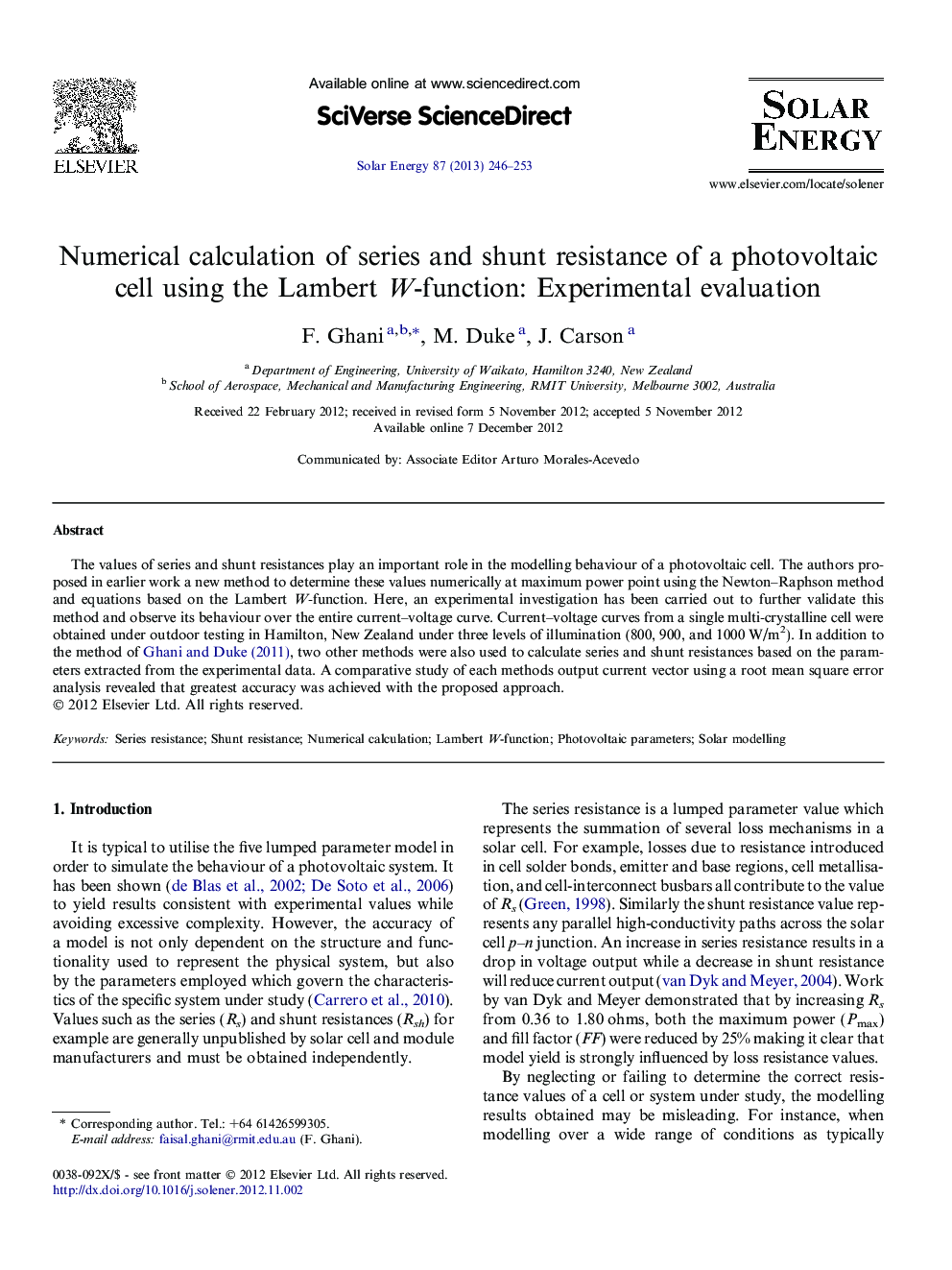| Article ID | Journal | Published Year | Pages | File Type |
|---|---|---|---|---|
| 1550693 | Solar Energy | 2013 | 8 Pages |
The values of series and shunt resistances play an important role in the modelling behaviour of a photovoltaic cell. The authors proposed in earlier work a new method to determine these values numerically at maximum power point using the Newton–Raphson method and equations based on the Lambert W-function. Here, an experimental investigation has been carried out to further validate this method and observe its behaviour over the entire current–voltage curve. Current–voltage curves from a single multi-crystalline cell were obtained under outdoor testing in Hamilton, New Zealand under three levels of illumination (800, 900, and 1000 W/m2). In addition to the method of Ghani and Duke (2011), two other methods were also used to calculate series and shunt resistances based on the parameters extracted from the experimental data. A comparative study of each methods output current vector using a root mean square error analysis revealed that greatest accuracy was achieved with the proposed approach.
► Experimental validation of previous work by Ghani and Duke (2011). ► Numerical method to calculate resistance values using the Lambert W-function. ► Method of Ghani and Duke (2011) compared with two other published methods. ►Comparative analysis revealed greater accuracy achieved with proposed method.
